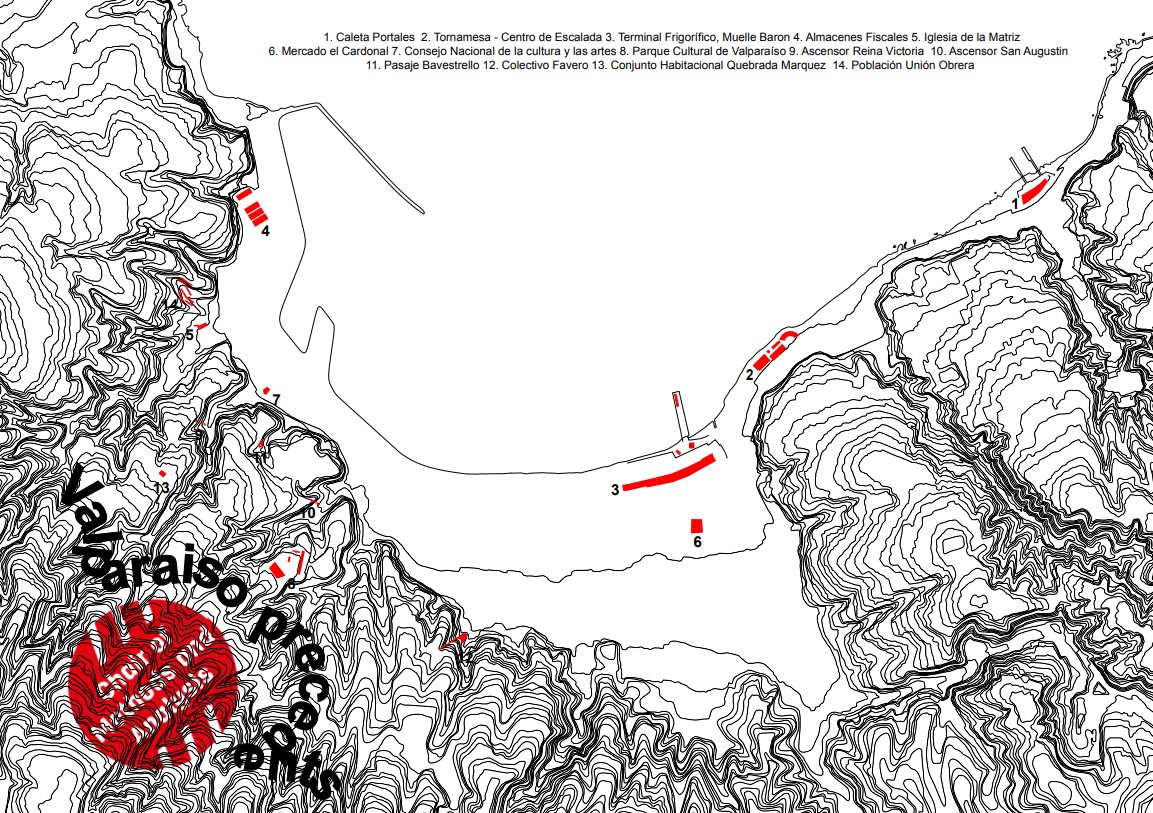Probing into Precedent - Valparaiso Precedents
(IN)Tangible memory of the centre of Bogota
Students: Devant Asawla, Nan Zhang, Max Gelibter, Michael de Beer, Michelle Siemerink, Bronya Meredith, Koen de Veth, Evgenia Vlachaki, Sába Schramkó, Jiayu LI, Zhi Zhang, Livia del Conte, Yagiz Söylev & Veronica Cristofoletti
Title: Probing into Precedent - Valparaiso Precedents
Semester: 2017
Teachers: Willemijn Wilms Floet, Wenwen Sun, Piero Medici, advised by Oscar Andrade
In autumn 2017, the Methods and Analysis Graduation Studio from Delft University of Techonology took the opportunity to descend on Valparaiso, Chile in collaboration with Escuela de Arquitectura y Diseño de la Pontificia Universidad Católica de Valparaíso and Corporación Cultural Amereida.
Operating in an unknown and unfamiliar context raises the question how to look for 'firm gound'. A study of precedents is a valuable point of departure, which creates a frame of reference. The analysis of the precedents in Vapalaiso is a collective research to understand the local architectural cultures regarding the theme of 'commons'; in the autonomy of the architectural projects, social, political, and cultural values and ideas about commonality are hidden.
The selection of projects presents the categories of 'commons' that are related to the specific topography of the city: the projects making up the coastline, infrastructure and housing dealing with the hills and valleys, and remarkable public facilities interacting with the public spaces in the city of Valparaiso.
Plan analysis - studying buildings meticulously by means of analytical drawing and modeling (abstractions that grasp the keys of a project) - is a specific Delft designerly way of amassing knowledge: topic, research method and result are in the language of architecture itself. The process of analysis follows the steps of a design process, however, in a reversed order. By taking a design project apart, the ‘specific construction’ is dismantled into ‘principles’, which are not only useful to understand a project, but also opening up opportunities for ‘re-interpretation’ or ‘reconfiguration’. This booklet is a preparation to study the projects as commons on site: the interaction between form and inhabitation.
More information and documentation about this project and booklet can be found here.
